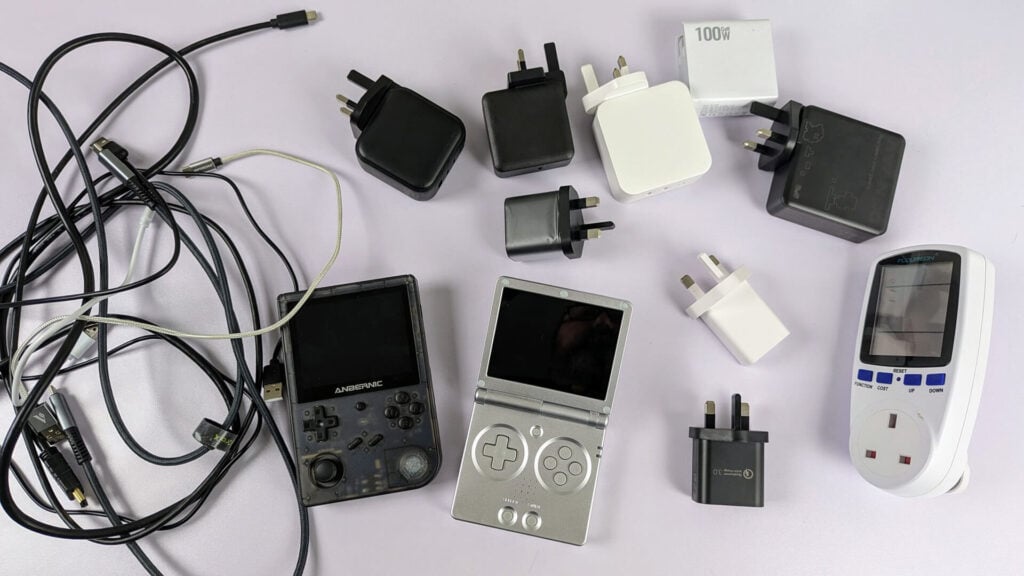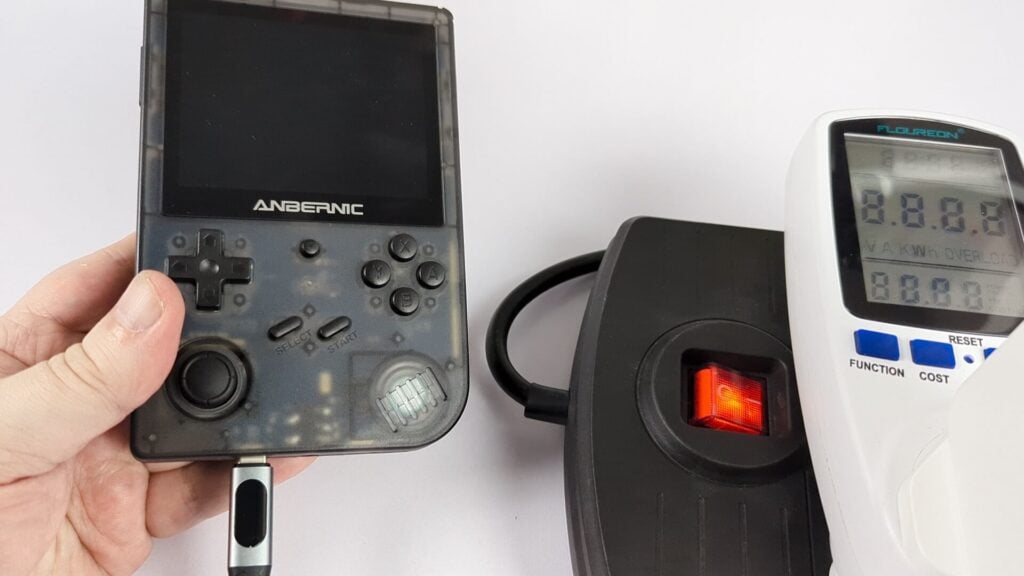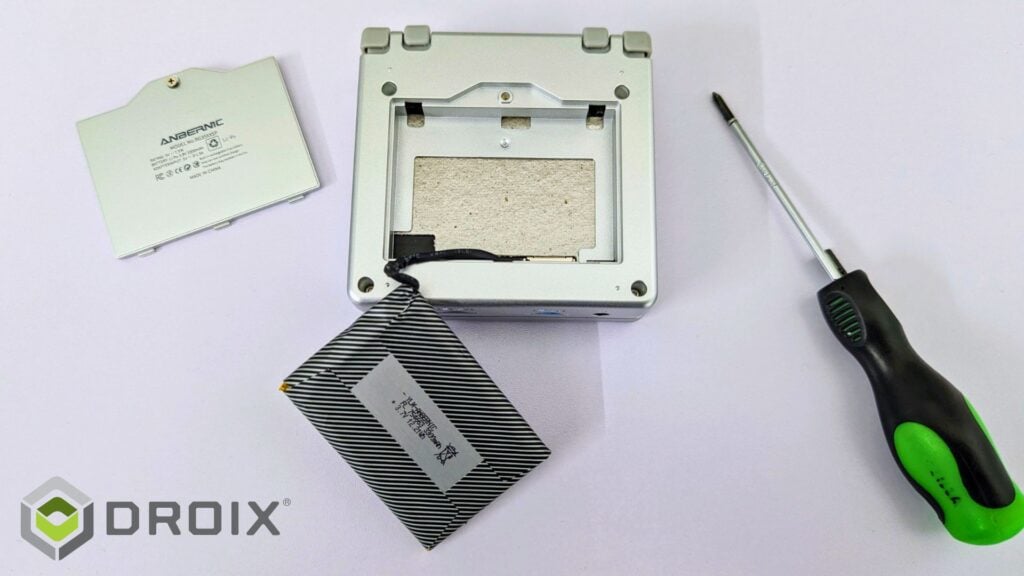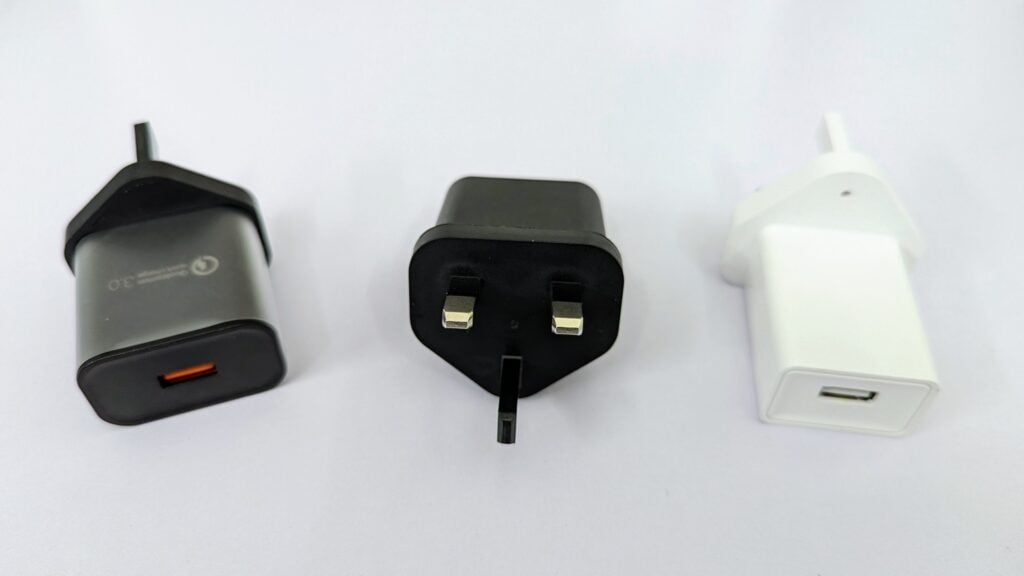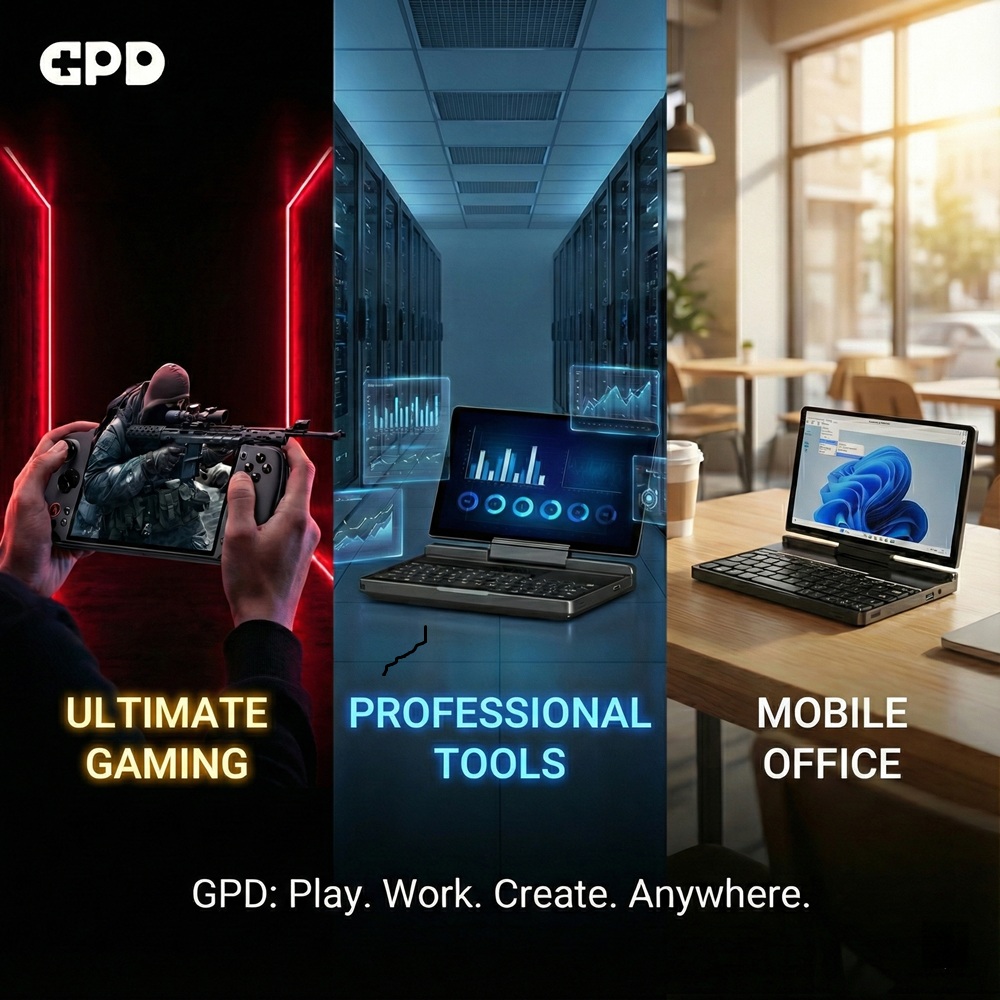In recent months, Anbernic customers have increasingly reported that their devices have either malfunctioned or, in some instances, burnt while charging. Although this has historically been a minor issue given the volume of devices sold, recent occurrences, particularly involving the Anbernic RG35XXSP model, have raised concerns due to potentially hazardous incidents linked to faulty chips situated near the battery.
This article aims to bring this safety issue to light, not just for our customers but for anyone considering the purchase of an Anbernic device. We will delve into the details of the problem, share examples from device owners, pinpoint the cause, and discuss Anbernic’s response based on our conversation with them. Furthermore, we will conduct our own tests on Anbernic devices, attempt to replicate the issue, and provide guidance on how to prevent or mitigate the risk with your device.
Reports on the internet
We spent some time researching the issue and on Reddit especially there are a several recent posts with owners showing devices that have experienced failures with their device. Below are two:
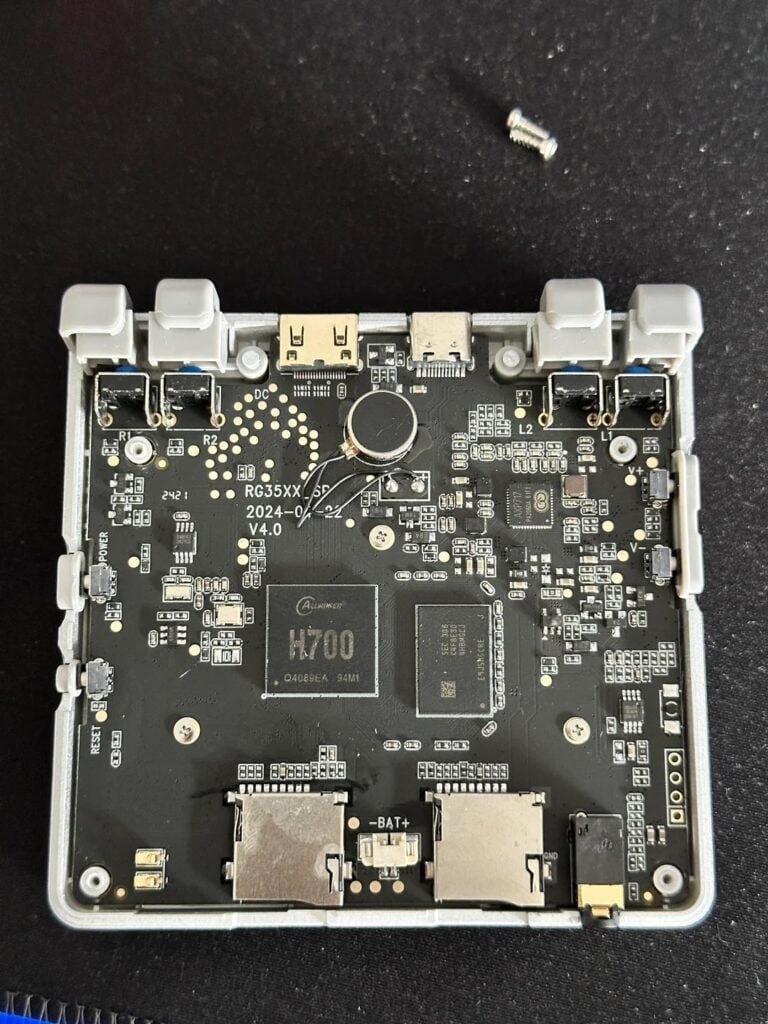

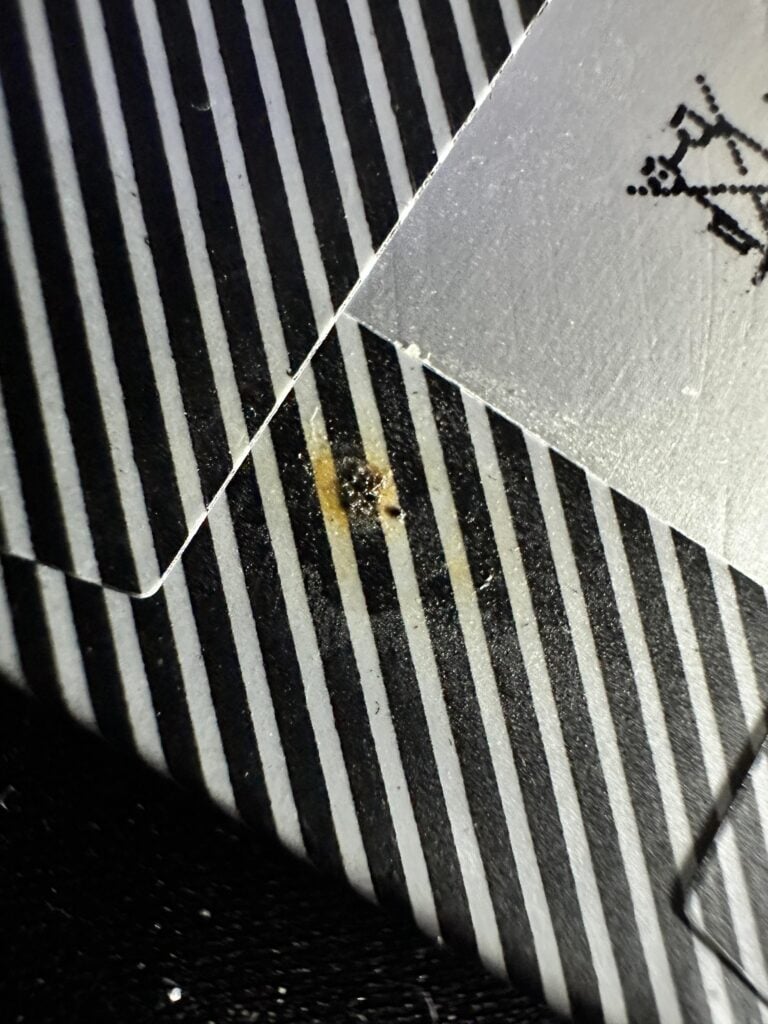
In the above example, credit to No_Breakfast_1167 on Reddit, we can see that the blown IC which is close proximity to the battery has caused some damage to it. The device was not being charged at the time the IC blown. They heard a loud pop and the device died.
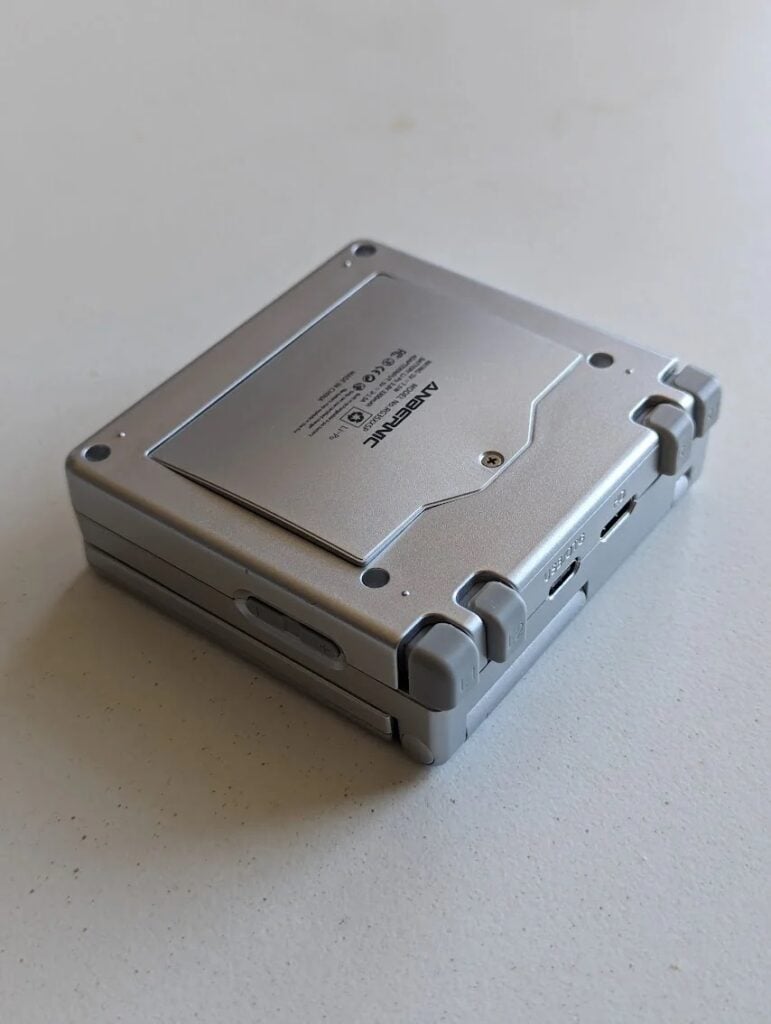
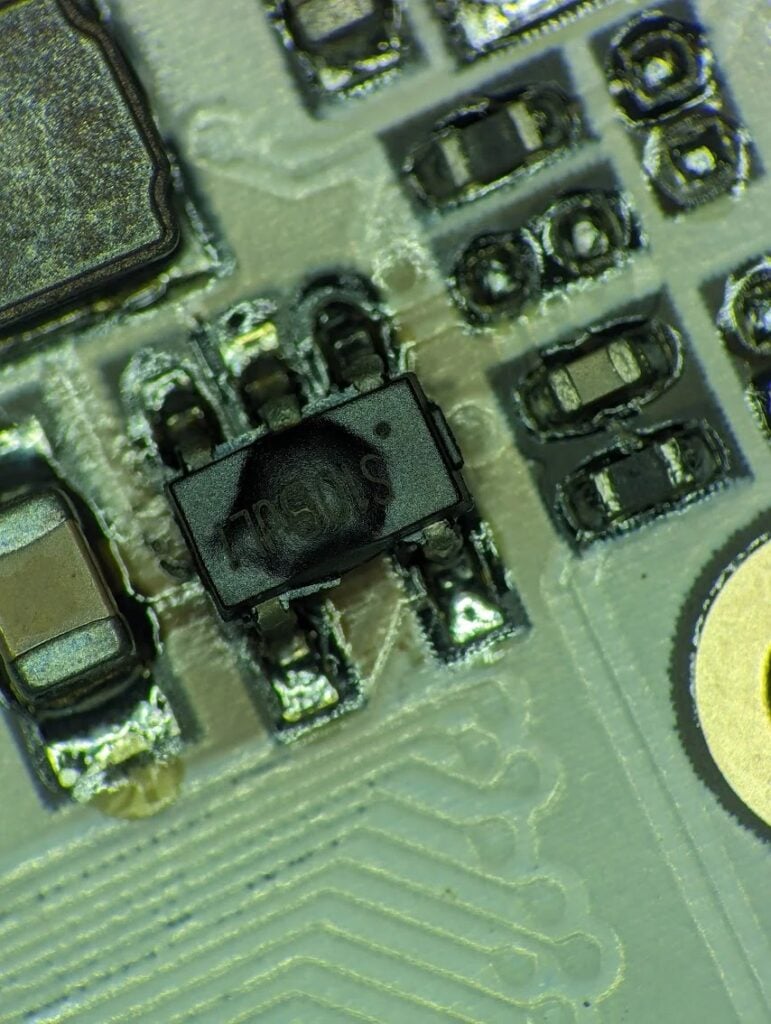

In the above example, credit to Snoo74895 on Reddit, we can see that the battery has swollen. This has made the battery cover and parts of the case bend out of shape. Again it is the same IC that has blown. Snoo74895 mentions the device was on low battery, powered off and charged for around two hours. They had used an Apple PD-capable USB-C/USB-C cable to a generic 65W PD charger with the following specifications: Input 100-240VAC, 50/60Hz, 1A Output: DC 5V/4A. 9V/4A, 12V-4A, 20V-3.25A. You can read about another example here.
The issue
Through research and analysis, we have identified that the issue is from the IC responsible for controlling the power step-down from the charger to the battery appears to be failing.
While the exact cause of this failure has not been definitively confirmed, it is most likely due to the use of low-cost, low-quality ICs, potentially sourced from a defective batch or even as second-hand components. Additional contributing factors may include using a high-power charger or not utilising the supplied Anbernic USB-A to USB-C charging cable.
If the failure is indeed random, it becomes a matter of chance whether your device will be affected. However, it is worth exploring whether using incorrect chargers and cables can actually cause damage to your Anbernic device.
Our own tests
We started with a bunch of chargers we have in the office ranging from 100W USB C chargers down to 5W USB A chargers. We also tried a variety of USB-C to USB-C cable and USB-A to USB-C cables.
Anbernic RG35XXSP
In our tests on the Anbernic RG35XXSP, we experimented with various combinations of USB-C chargers and USB-C to USB-C cables. As expected, none of these combinations initiated charging, confirming that the handheld does not support C2C charging. We then tested several chargers with USB-A ports and a variety of random USB-A to USB-C cables. All of these setups successfully charged the handheld within the correct parameters.
We selected a 100W charger equipped with both USB-C and USB-A ports and charged the RG35XXSP using a USB-A to USB-C cable. We monitored the power draw and thermal conditions every so often.
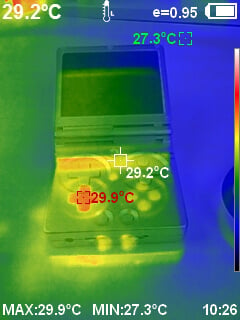
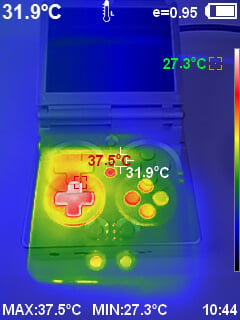
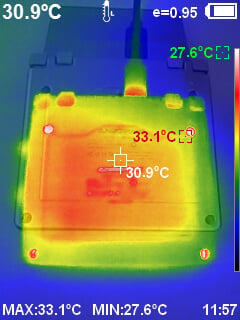
It is worth noting that we conducted this test on one of the warmest days in the UK, with temperatures around 30°C. Initially, the front side of the device measured about 30°C, rising to a maximum of 37.5°C. The back of the device reached a maximum of approximately 35°C. These temperature increases of around 5 to 7°C are normal during battery charging and were lower than we had anticipated.
In terms of power draw, we observed an initial usage of 8W, which slightly decreased to 7.8W once the screen displaying the charge level turned off. The power usage continued to decline as the battery charged.

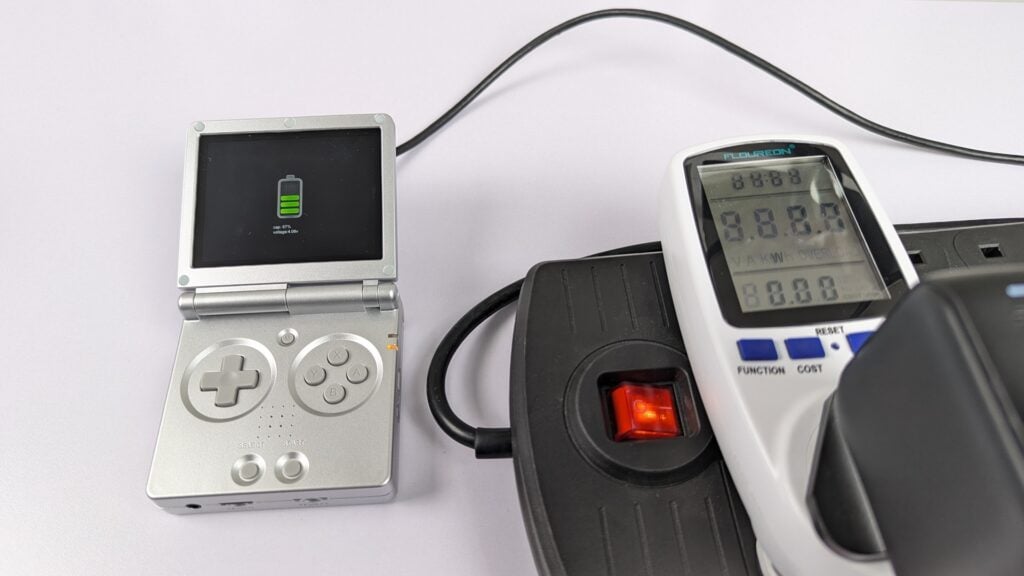
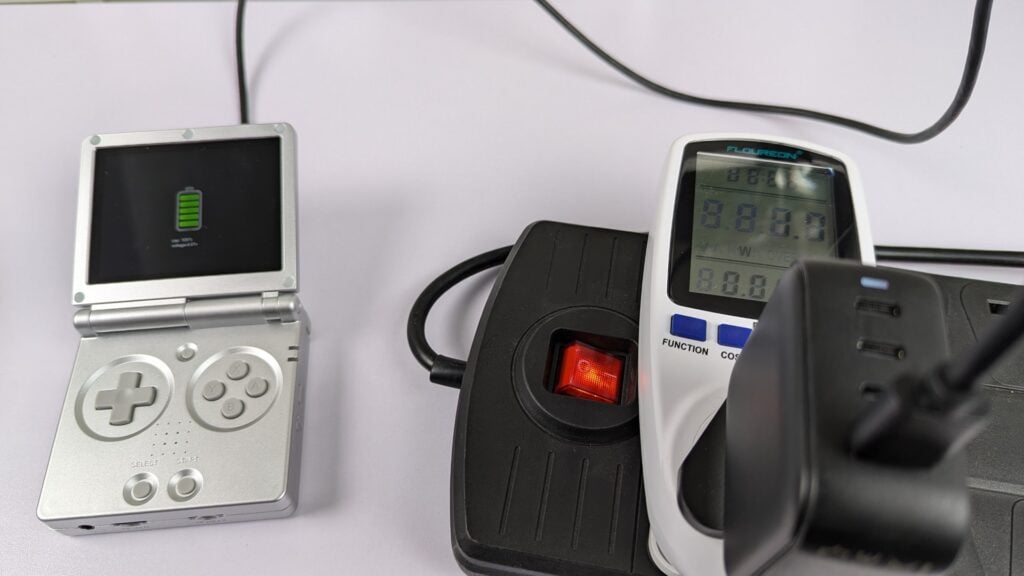
Upon reaching a full charge, the device stopped charging, the orange LED turned off, and the power meter indicated a usage of 0.8W. We left the charger connected for an additional hour and observed no further charging or increase in power usage.
Anbernic RG351V
The RG351V, an older model from Anbernic, has had at least one confirmed report of failure when a user plugged in a USB-C to USB-C cable.
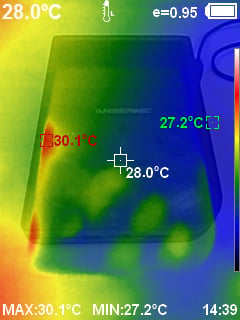
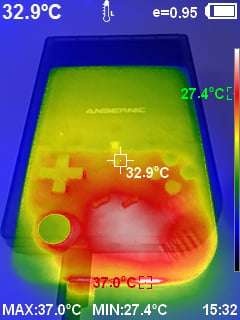
We began our test with a 5W 2A charger to gather some initial data. Starting from a cold state, the device’s temperature was around 30°C. Throughout the charging period, the temperature reached a peak of 39°C. This increase, slightly higher than the RG35XXSP, may be partially attributed to testing in the afternoon when the office temperature was higher than in the morning. Despite this, the temperature remained within safe parameters. Similarly, we observed a peak power usage of 8W, which gradually decreased as the battery charged.
Next, we tested with a 100W charger using the DroiX USB-C to USB-C cable. Preparing for the worst, with fire extinguishers at the ready, we connected the cable to the handheld. To our surprise and relief, nothing happened—no power was drawn at all. We repeated the test with the same chargers and cables as before, but none provided power. We even tried in the second USB-C port which is not used for charging, and it continued to function without issue.
Conclusion
We are not electrical engineers or experts; our tests essentially reflect what an average owner might have at home. This includes a few old 5V phone chargers and high-power chargers typically used with handheld gaming PCs, laptops, or phones, along with a collection of random USB-A and USB-C cables lying around.
Despite testing multiple chargers and various USB-A and USB-C cables, we were unable to ‘break’ the handhelds in any way. Our tests, however, are not exhaustive. There are numerous chargers and cables available, each with varying quality standards and this could be a factor.
Revisiting our initial hypothesis, it seems likely that the power regulator IC is of low quality, potentially deteriorating over time and eventually failing. Such a failure is most likely to occur during charging or charging while playing while the device is at its warmest. It could also be possible through overclocking the device but this is unconfirmed. These instances could lead to further damage to the board, casing, or even the battery.
Newer revision’s of the Anbernic RG35XXSP have a ‘fish paper’ type material between the motherboard & casing and in turn the battery. Fish paper, also known as vulcanized fiber or fishpaper, is an insulating material made from cotton paper that has been treated with chemicals to enhance its dielectric properties. This material is known for its high mechanical strength, flexibility, and excellent electrical insulation capabilities, making it ideal for use in electrical and electronic applications. In this instance it provides some electrical and thermal insulation.
At DroiX, we can confirm that the last batch we sold had ‘fish paper’ as shown in the photo above. We expect the next batch to have this as well.
Considering the number of incidents relative to the vast number of units sold and the addition of fishpaper for additional protection, we believe the occurrence rate is low enough for us to continue selling Anbernic retro gaming handhelds. However, we strongly advise everyone, whether they are our customers or not, to adhere to best practices mentioned below when charging any devices, not just Anbernics. If the situation changes in terms of safely to customers we will not hesitate to stop the sale of the product on our store.
Have you purchased from DroiX and had this issue?
If you purchased your device from DroiX and believe it is faulty due to failed components within the one-year warranty period, please contact us at [email protected] with your order number and relevant details. While other sellers may not cover such issues under warranty, we are committed to providing comprehensive customer support and honoring our warranty policy.
Device charging best practices
Proper charging is crucial for the longevity and safety of your Anbernic device. Follow these guidelines to ensure safe charging and avoid potential damage.
Use Only the Supplied Cable
- Always use the USB-A to USB-C cable provided with your Anbernic device.
- Avoid using USB-C to USB-C cables, even if they seem compatible.
Stick to 5V Chargers
- Use chargers that output 5V only.
- Ideal power output: 5V/1A or 5V/1.5A (check your device’s specifications).
- Maximum safe output: 5V/2A (do not exceed this).
Avoid Fast Chargers
- Do not use fast chargers, quick chargers, or chargers labelled as “PD” (Power Delivery).
- These can potentially damage your device or cause battery issues.
Safe Charging Options
- Use the charger supplied with your Anbernic device (if included).
- Use a standard USB-A port on your computer.
- Use older, lower-power phone chargers (e.g., older iPhone chargers rated at 5V/1A).
Charging Best Practices
- Monitor your device while charging, especially the first few times.
- Unplug the device once fully charged; avoid leaving it plugged in continuously.
- If the device feels unusually warm while charging, unplug immediately.
Warning Signs
If you notice any of the following, stop using the device and contact where you purchased the device from. If it is from us at DroiX please email [email protected] or via the Contact Us page where you can use live chat, send a message etc.
- Battery swelling
- Unusual heat during charging
- Rapid battery drain
- Device not charging properly
[azp_custom_product id=”10″]






